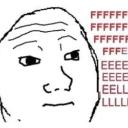Yahoo Answers is shutting down on May 4th, 2021 (Eastern Time) and the Yahoo Answers website is now in read-only mode. There will be no changes to other Yahoo properties or services, or your Yahoo account. You can find more information about the Yahoo Answers shutdown and how to download your data on this help page.
Trending News
What is the inverse of y= x ln(x)?
What is it's domain?
I did this and I don't understand it well
y=xln(x)
x=yln(y)
x/y=ln(y)
e^(x/y) = y
but that's obviously not it
additional question, what is the [inverse of x*ln(x)]'s domain?
2 Answers
- ItsAStuggleLv 68 years ago
As far as finding the inverse go that looks right. If you plug the original function into its inverse and get X. What you found as an inverse is correct e^(x/xln(x)) clearly give x because in x/xln(x) the Xs cancel and you're left with e^ln(x) which is just x. As far as the domain of the inverse goes, it looks like it's from positive to negative infinity. As, you can plug in any x value(domain only refers to x values) and get back an answer.
To the first answer, he isn't finding the rate of change of anything so I hardly see as to how derivatives are related to this.
- 8 years ago
Obviously, getting x on its own is gonna be problematic. We don't even have a dy/dx term so we can't solve a differential equation on it.
However, we know that the range of one function is the domain of it's inverse.
let's assume g = ln(x). What is the range of g? That would affect the range of y. The range of g is:
-inf<=g<=inf or g goes between negative and positive infinity.
Hence xln(x) would go from negative infinity to positive infinity.
So your domain of the inverse would be such that x goes from negative infinity to positive infinity.
Hope this helps! ^^
Source(s): First year university student who loves maths c:




